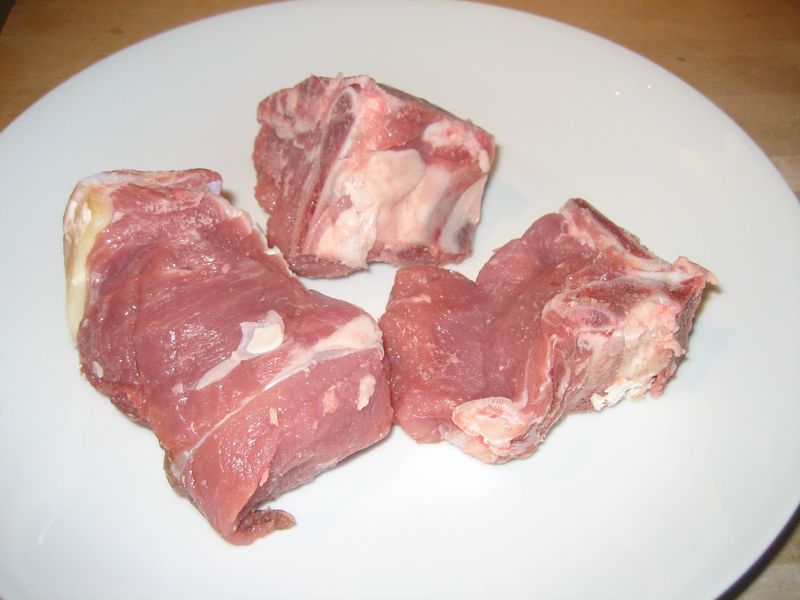A cross-cultural burger: An Afghan-spiced beef and bulgur kebab served on pita with yogurt
Afghan dumplings topped with ground lamb and garlic yogurt
By Katie
A while back I had a vegetable tagine at Nopa, a restaurant here in San Francisco. The tagine itself was lovely. Best of all, it was crowned with a spoonful of rich, tart yogurt gently perfumed with lemon. Although tagine is distinctly Moroccan, the slow-cooked quality of the vegetables, and the fact that the dish was served with yogurt, reminded me of Afghan food. The next day I tinkered in the kitchen with a container of yogurt, a Meyer lemon and a zester. A dollop over a dish of dal was the perfect lunch
If you are familiar at all with Afghan cuisine you know that yogurt is a dietary staple. It always has a presence at the table whether poured over, stirred into, or resting atop a cooked dish, or served plain, usually spiked with dried garlic and a touch of salt.
The Afghans were way ahead of their time where yogurt is concerned. Back in the 1970s when Americans still considered yogurt to be “hippie food”, Afghans had been eating it for centuries. It’s as much a part of the cuisine there as basmati rice and nan bread.
Afghans were on to something. Yogurt plays an important role in their diet from both a nutritional standpoint and a culinary one. Not only is it a fine source of calcium, it is loaded with “good” bacteria, which is what actually turns ordinary milk into yogurt. Plus, the cooling yogurt balances the warming spices and long-cooked flavors so central to Afghan cuisine.
Most of the yogurt we eat here in the U.S. comes in fruity flavored eight-ounce tubs.In Afghanistan they’ve drummed up far more interesting preparations.
Mast
Mast is the Afghan word for yogurt. It is traditionally thicker and richer than what we are accustomed to eating. Humaira and I approximate the consistency by using equal parts Greek-style and American-style yogurt.
Chaka
This is a very dense yogurt made by straining full-fat yogurt through cheese cloth for several hours. It turns thick and tangy. You can easily substitute Greek yogurt for chaka.
Quoroot
The Afghans have a very clever way of preserving yogurt, since refrigeration is non-existent throughout much of the country. They strain, salt and dry it into hard balls called quoroot. The quoroot is then reconstituted in water and used in cooking. This was particularly useful for nomads who preserved their precious milk and tucked it into bags to be pulled out when they set up camp. Quoroot is still commonly used in a savory bread pudding called quorooti. You can find a recipe for it here on Afghan Cooking Unveiled listed under Main Dishes.
Dough
Afghans also drink their yogurt in the form of something called dough. It is a mixture of plain yogurt, water, cucumber, fresh mint and salt. Served cold, it is considered quite a treat in the hot summer months. I haven’t yet developed a taste for salty, minty yogurt drinks, but then again, I’ve never experienced a hot Afghan summer. Until I do, I’ll stick with my old Afghan standards --topped, of course, with yogurt.
Except where otherwise noted, all content on this blog is licensed under the Creative Commons Attribution-NonCommercial-NoDerivs 3.0 Unported license.












